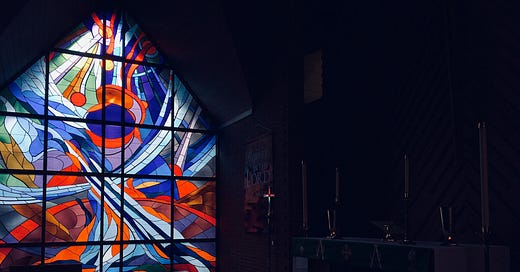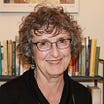I visited Your house again on Christmas or Thanksgiving
And a balded man said You were dead
But the house would go on living.
He recited poetry and as he saw me stand to leave
He shook his head and said I’d never find You.
--Noel Paul Stookey, “Hymn”
When I started thinking about religious change in the ‘60s, I turned to Frye Gaillard’s A Hard Rain: America in the 1960s, Our Decade of Hope, Possibility, and Innocence Lost, and specifically to a chapter called “Is God Dead,” which took me back to my college years. Gaillard began, “The cover headline for Time practically made the magazine jump off the newsstand with its bold red letters against a background of black: 'Is God Dead?'“ Even in the heart of the sixties, when the times were a’changing and the news turned dark at the drop of a hat, this was a startling idea.”
I was a first-year student at Pfeiffer, a small Methodist-related liberal arts school 45 miles northeast of Charlotte, North Carolina. Surrounded by farmland, Pfeiffer seemed quite removed from the cultural change of the ‘60s and worlds away from campuses like UC Berkeley, Columbia University, and even UNC-Chapel Hill. Because I don’t recall talking with friends about God-is-dead theologians or understanding their ideas, I most likely learned about them through motive Magazine (always spelled with a lowercase “m”), the theologically and politically progressive publication of the Methodist Student Movement. Though I was among those startled by this theology, it didn’t rock my world. My pastor had said, “Don’t be afraid of learning new ideas in college. A faith that can’t entertain doubt and questioning is not worth having.” I believed him.
One of the God-is-dead theologians mentioned in the Time article was Thomas J. J. Altizer, a professor of religion at Emory University. Altizer received hate mail and death threats, and Emory’s President, Sanford Atwood, faced demands from university trustees, representatives of the Methodist Church, and alumni that Altizer be fired. Atwood refused, saying, “Altizer is a professor who feels he has an idea worth discussing. He has the right to do so.” Altizer continued to receive hate mail and in several years moved to another university, but, writes Gaillard, “. . . Emory suffered little for Atwood’s stand. On the contrary, it emerged with its national reputation enhanced, recognized as a beacon of academic freedom.”
Altizer’s story is but one example of the religious ferment of the 1960s, which Gaillard calls “an unsettled era when the yearning of the spirit took many forms, when multiple currents of belief serged through the consciousness of the country.” Some of those currents animated activists whose work for justice was motivated by their understanding of Christianity—people like the Rev. Martin Luther King, Daniel Berrigan, and Thomas Merton. Gaillard notes that some currents led people to “a willingness to embrace uncertainty, to experiment with new ways of thinking” and others to “a yearning for certainty, for some fixed point in the constellation of faith.” In the mid-60s Jerry Falwell started the Lynchburg Christian Academy, an all-white school, and preached against integration and the Civil Rights Act. Bill Bright and Campus Crusade for Christ offered college students a very different version of faith than that of “mainline” campus ministries who were distributing copies of motive Magazine and trying to raise awareness of the social justice concerns that Peter, Paul, and Mary were lifting up in their songs.
Gaillard ends this chapter by saying, “If it was really true, as national polls indicated, that most of us believed in God, not much unity came with that belief. In these middle years of the 1960s, faith was one more source of division, one more battleground of the heart.” He makes the ‘60s sound a lot like today. JTF
Connections
In researching our book, I’ve read hundreds of reviews of Noel’s albums, concerts, and solo performances within PP&M concerts. The most memorable one was written by Frye Gaillard in his review of Real to Reel in the Charlotte Observer. The following quote told me he really understood Noel’s music.
“In the years since [being “introduced to Jesus”], Stookey’s religious convictions have deepened. They show up strongly on this album. This is not the predictable, old-fashioned fundamentalism you so often hear in gospel music. Stookey’s religion is more subtle and combines with the humane messages that were always there for Peter, Paul, and Mary.”
That review sent me looking for more work by Galliard, including A Hard Rain. Galliard is the author of more than thirty books, the latest of which is The Southernization of America, coauthored with Pulitzer Prize winner Cynthia Tucker.
Read the 1965 Time article “Theology: The God Is Dead Movement.”
Read about Thomas J.J. Altizer in Emory Magazine.
Learn about motive Magazine, the single runner-up to Life as Magazine of the Year in 1965.
Photo by Josh Eckstein on Unsplash
Vibrations
Listen to Noel’s song “Hymn,” which first appeared on the 1968 PP&M album Late Again and later on to Noel’s Real to Reel and There Is Love.







I started to write a comment but it disappeared into the cyber vortex somewhere. i'll try later. > you mentioned bill bright and campus crusade < Traveled to so many colleges with the band Logos i was in for Campus Crusade ! blast from the past.
Really enjoying the way this work is unfolding. Love how personal it is.